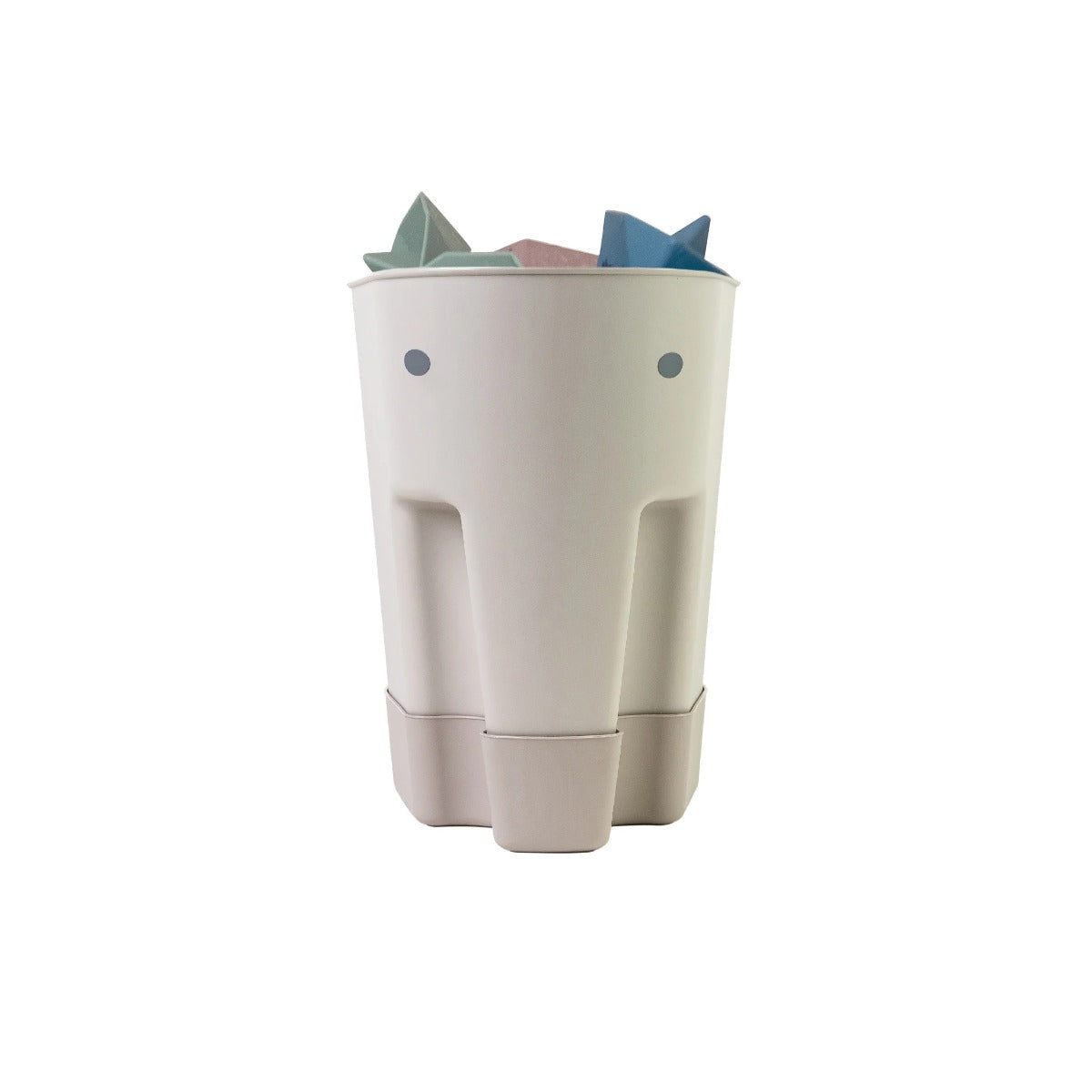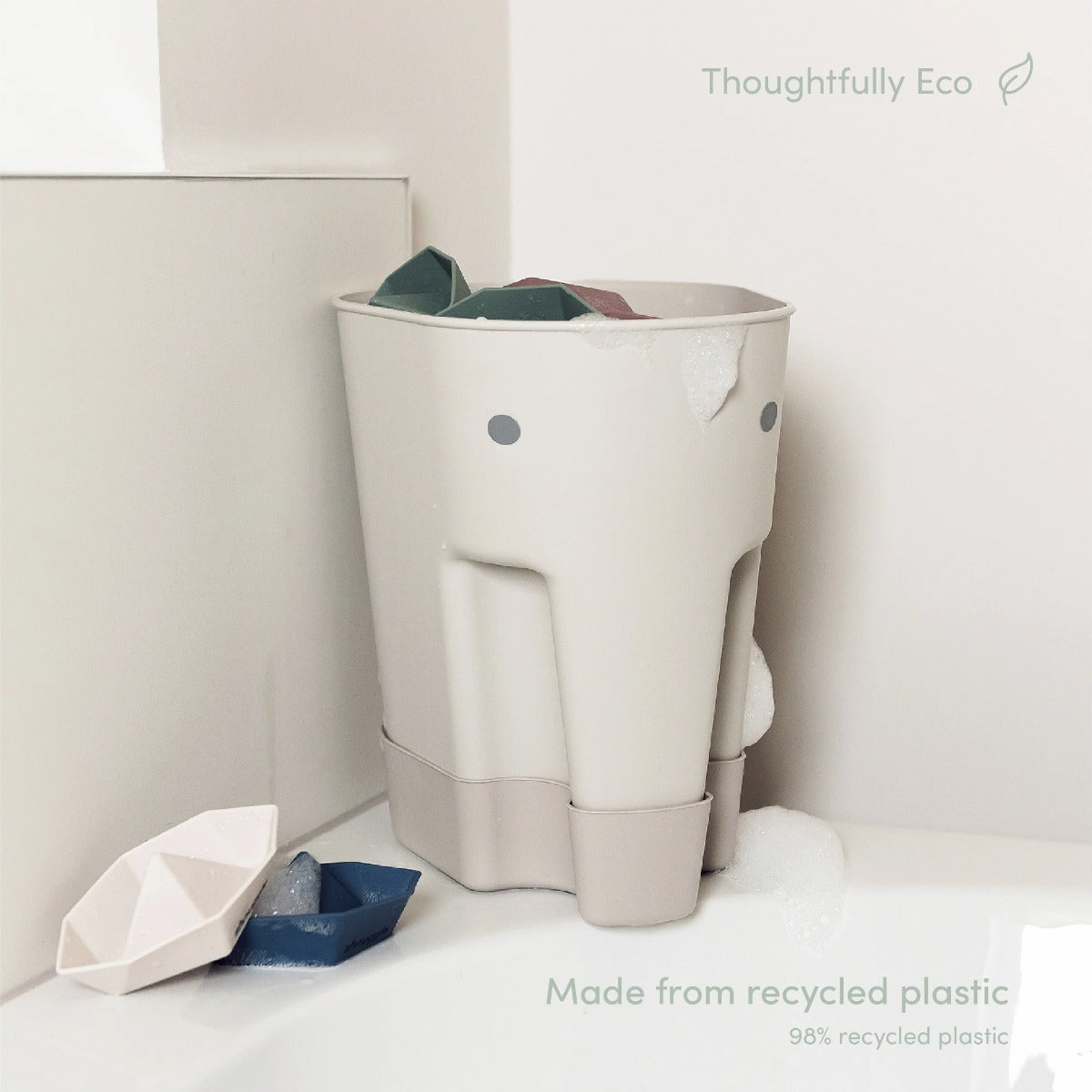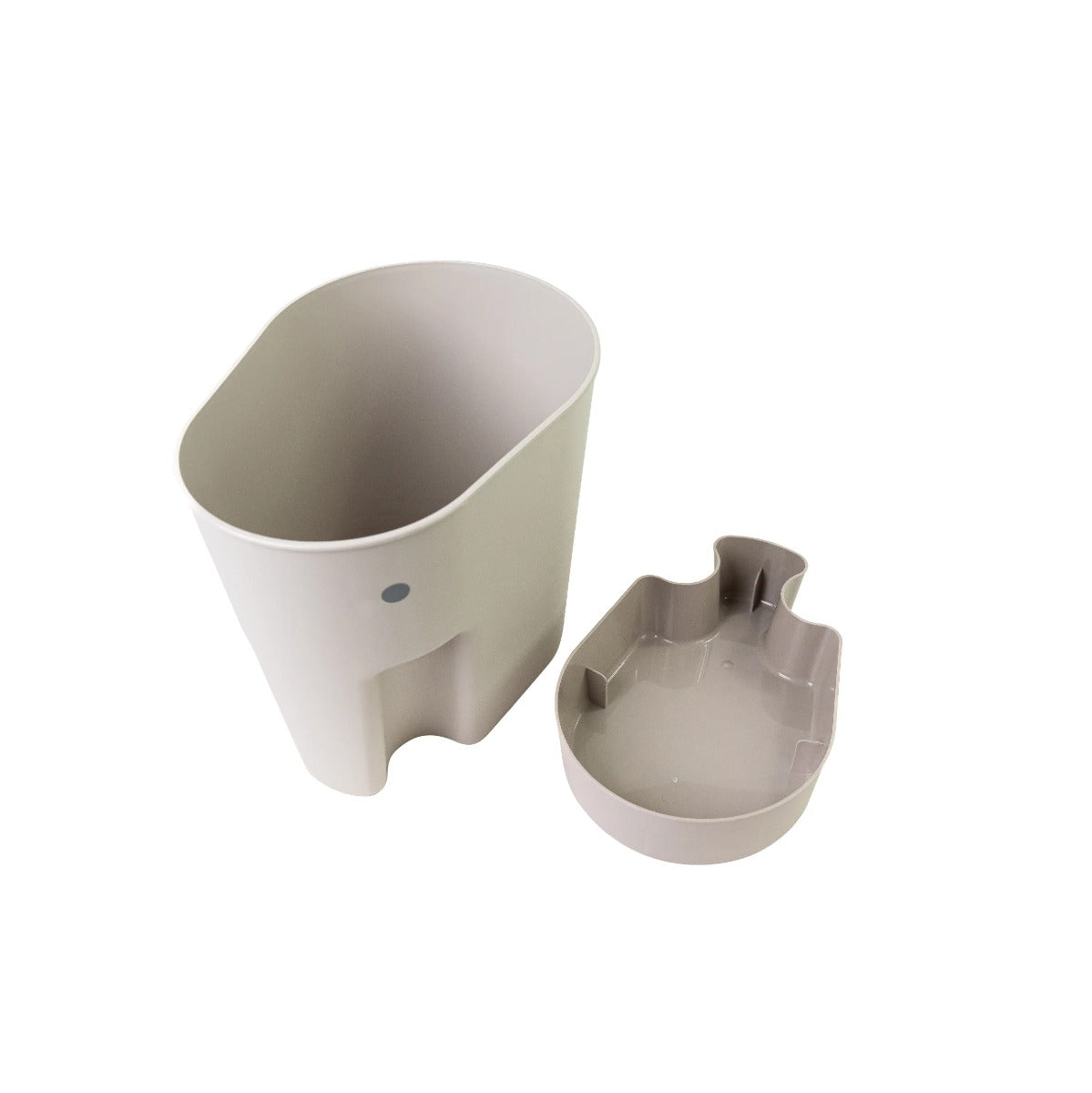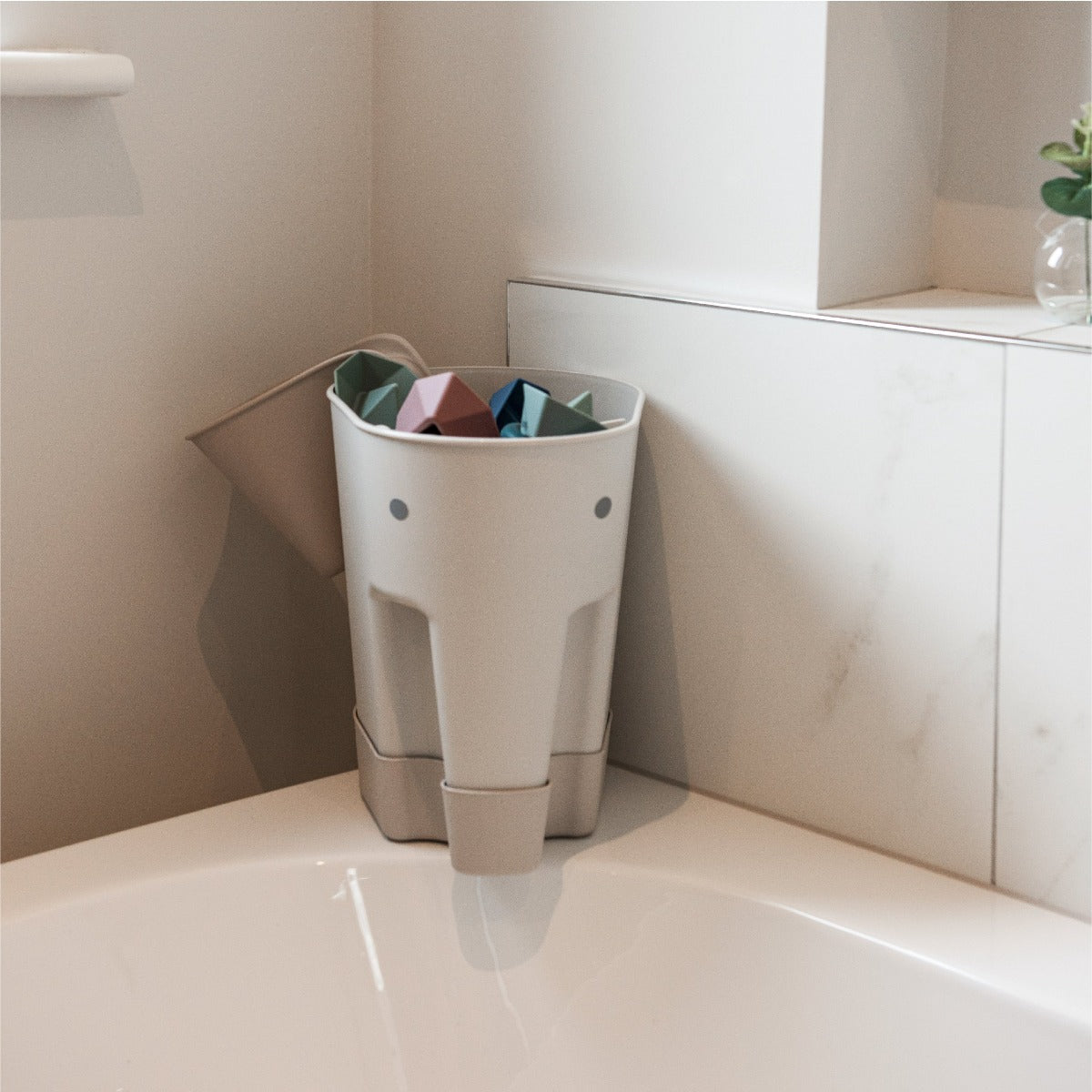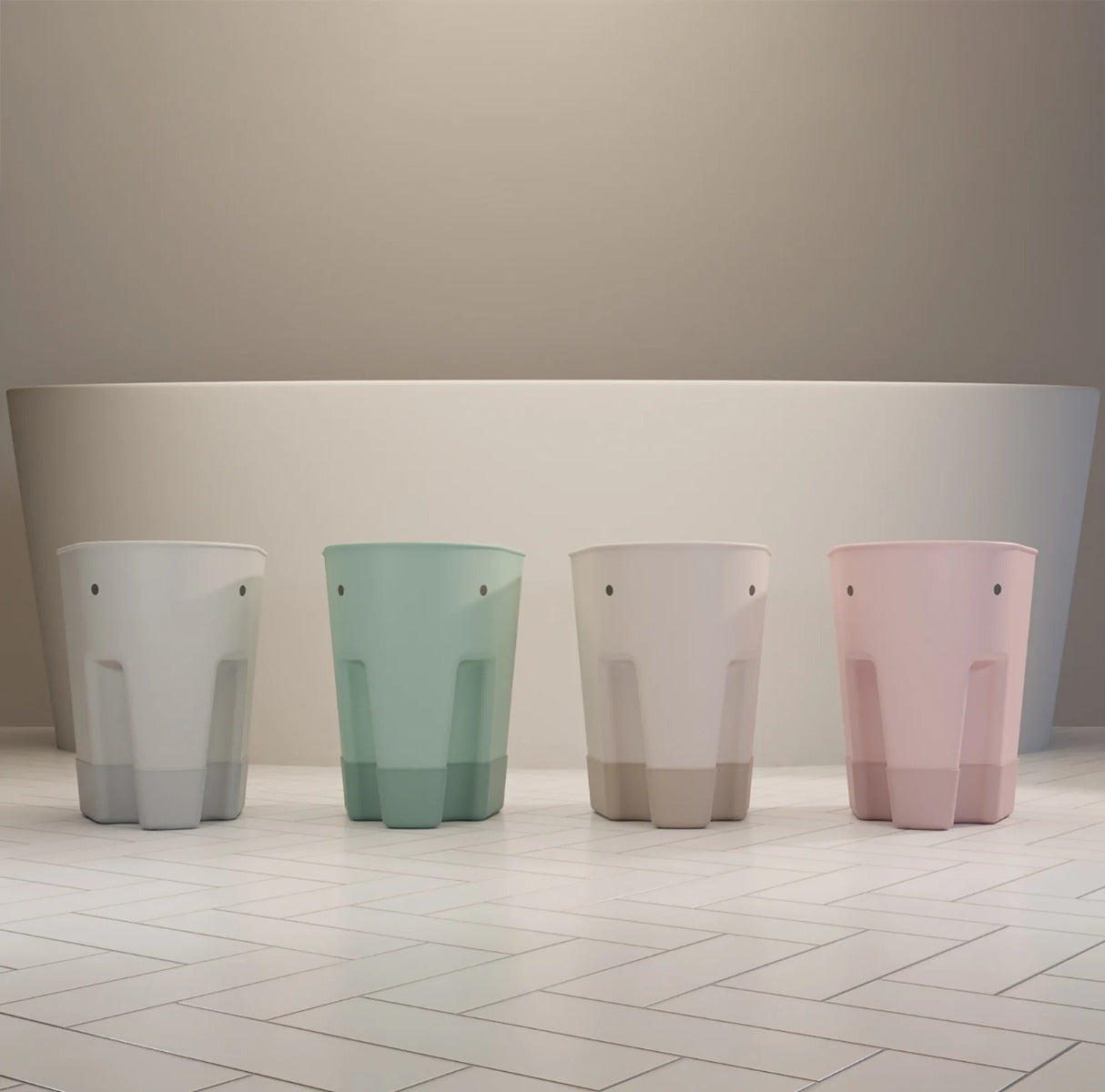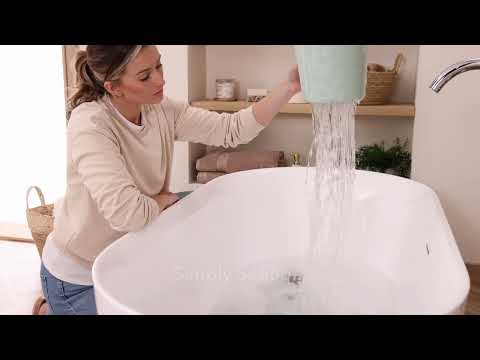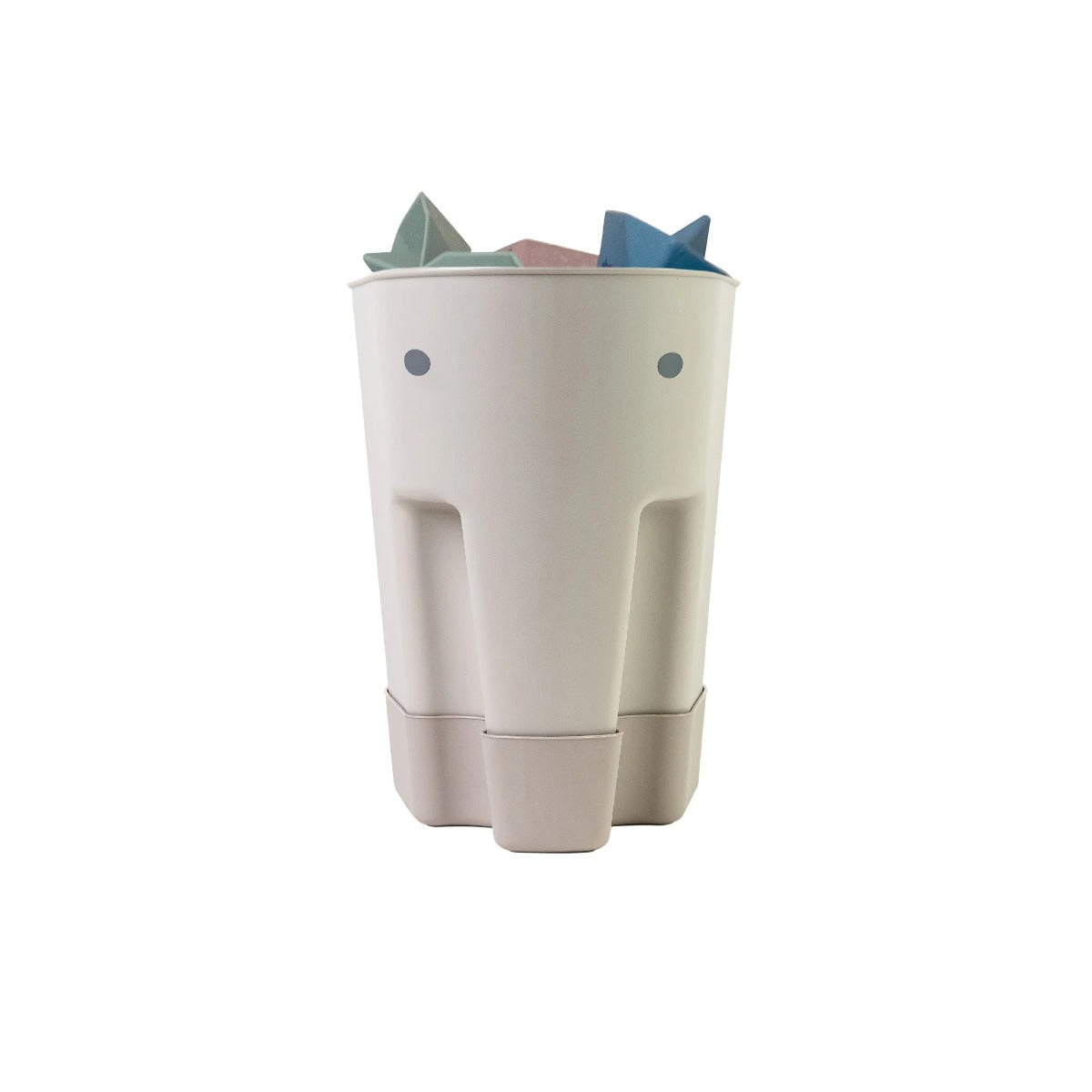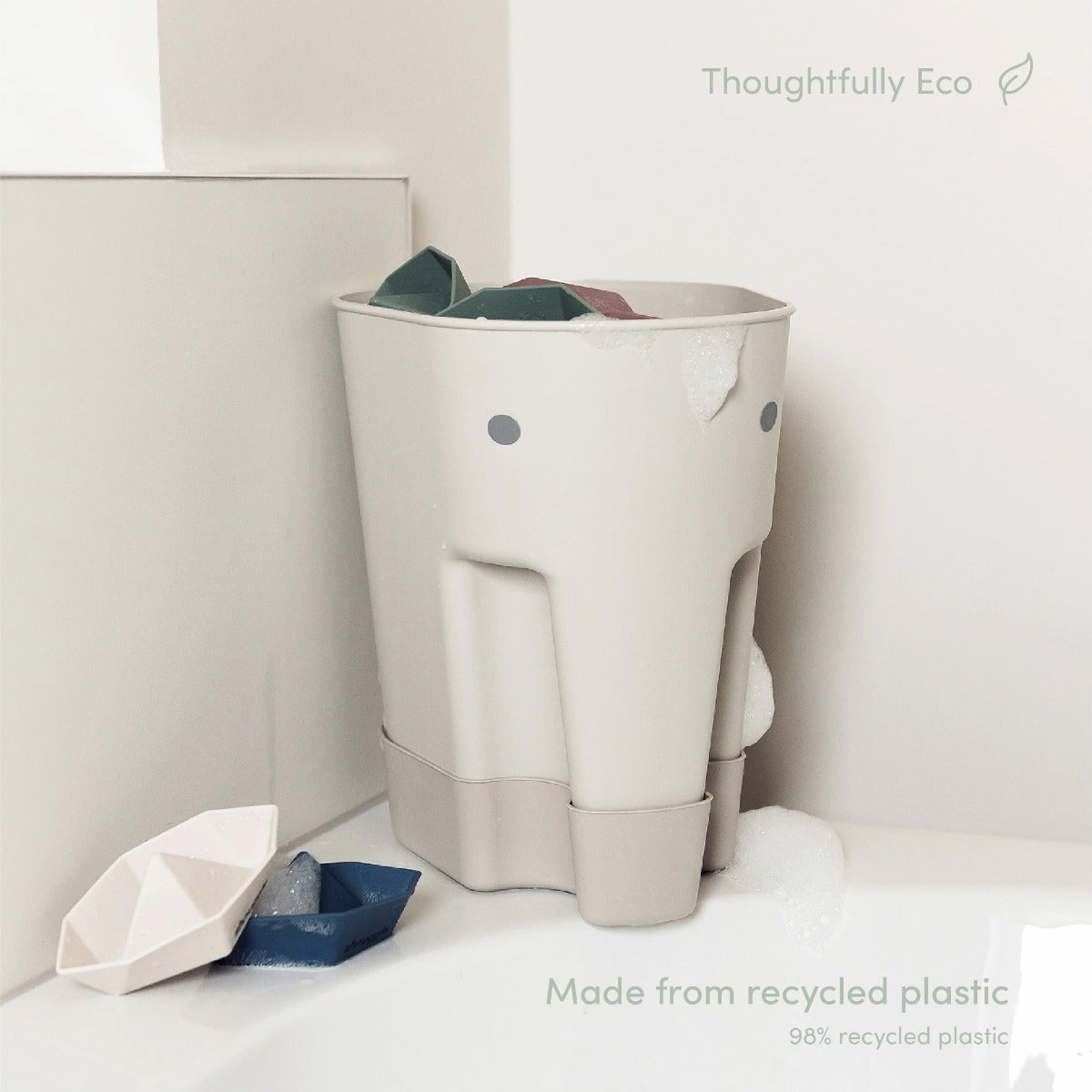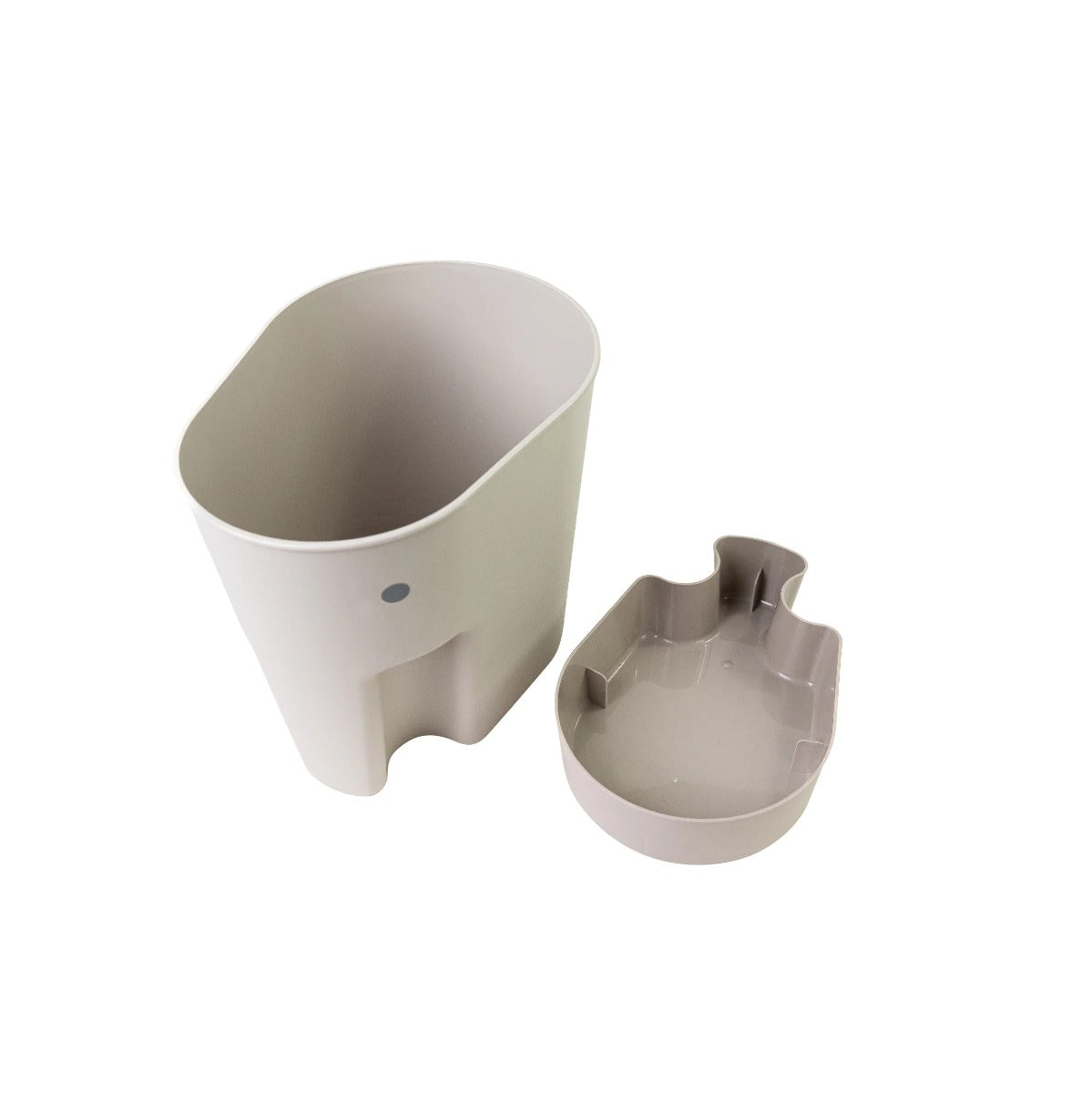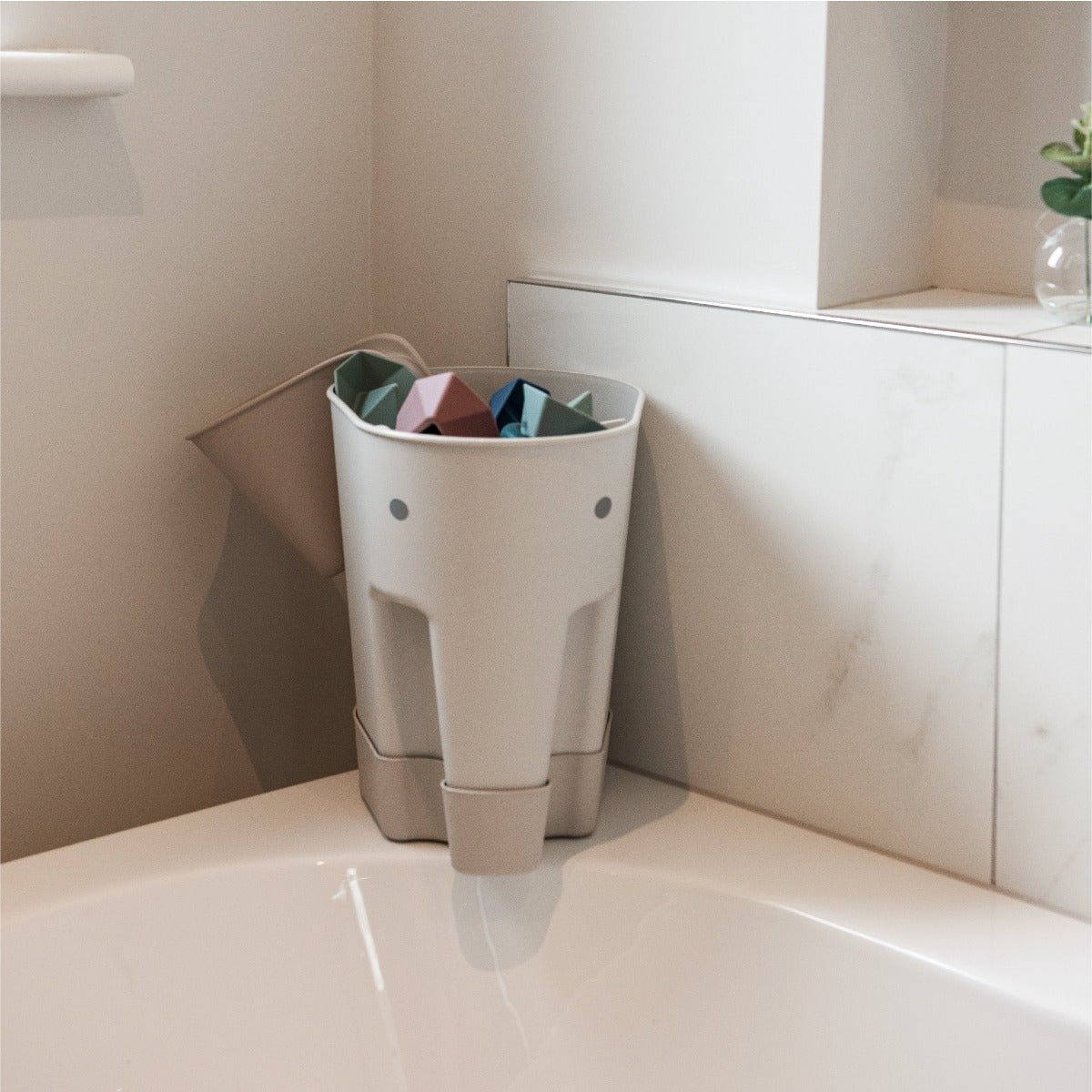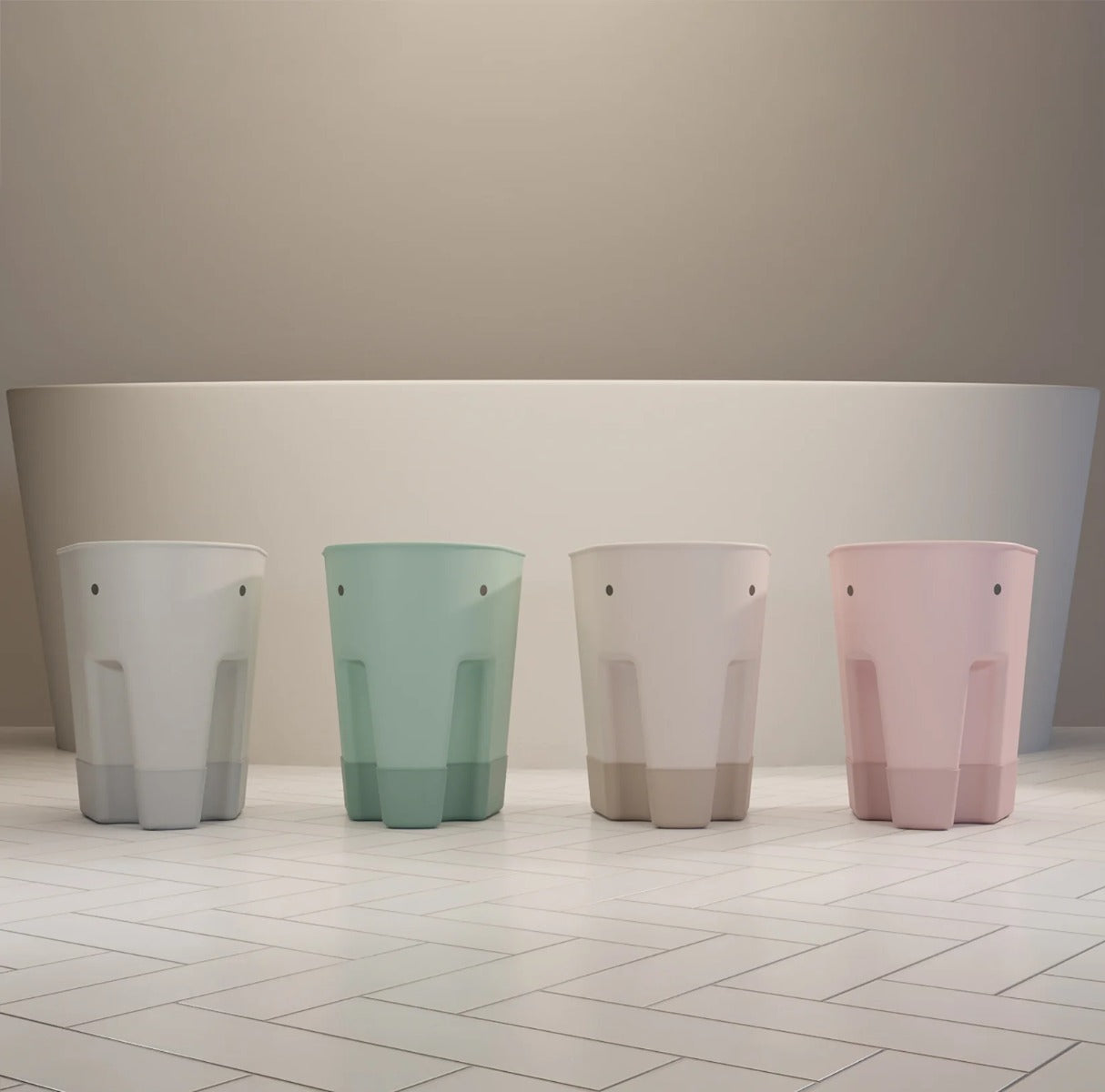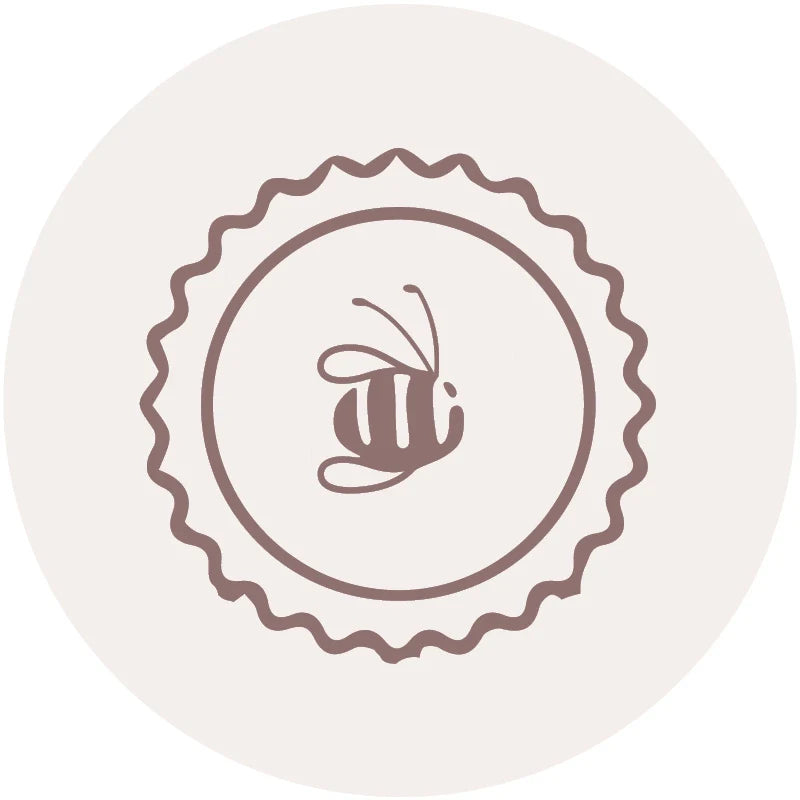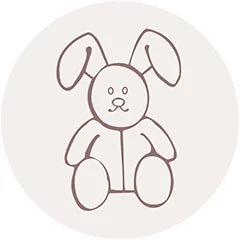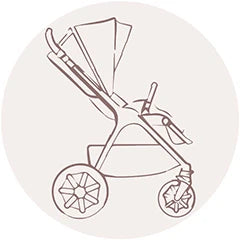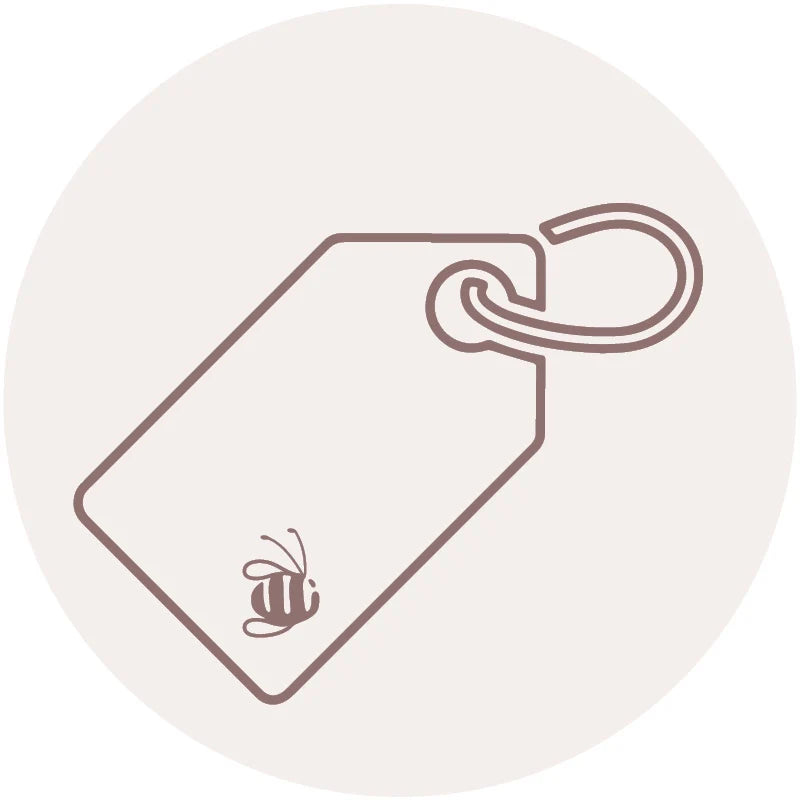Shnuggle Ellie Toy Drying Caddy
Shnuggle Ellie Toy Drying Caddy
SKU:SHN-TSB-TPE
Clothing Prem to 18 Months
| Size | Age Guide | Weight | Height |
|---|---|---|---|
| Premature | Premature or Small Newborn | Up to 4Kg | Up to 55cm |
| Newborn | 0-3 months | 4-6Kg | Up to 62cm |
| 3 Month | 3-6 months | 6-8Kg | Up to 68cm |
| 6 Month | 6-12 Month | 8-10Kg | Up to 76cm |
| 12 Month | 12-18 Month | 10-12Kg | Up to 84cm |
| 18 Month | 18-24 Month | 12-14Kg | Up to 92cm |
Clothing 2 to 6 Years
| Size | Age Guide | Height | Chest | Waist | Hip |
|---|---|---|---|---|---|
| 2 Year | 2-3 Years | Up to 100 cm | 56 | 51 | 58 |
| 3 Year | 3-4 Years | Up to 105 cm | 58 | 53 | 60 |
| 4 Year | 4-5 Years | Up to 110 cm | 60 | 55 | 62 |
| 5 Year | 5-6 Years | Up to 115 cm | 62 | 57 | 64 |
| 6 Year | 6-7 Years | Up to 120 cm | 64 | 59 | 66 |
Beanie Size Guide
| Size | Head Circumference | Age Guide |
|---|---|---|
| Premature | 31-35 cm | Premature or Small Newborn |
| Newborn | 35-40 cm | Newborn |
| Small | 40-43 cm | 3-6 Months |
| Medium | 43-47 cm | 6-18 Months |
| Large | 47-52 cm | 18-3 Years |
Sunhat Size Guide
| Size | Head Circumference | Age Guide |
|---|---|---|
| Newborn | 37-40 cm | Newborn |
| Small | 40-43 cm | 3-6 Months |
| Medium | 43-46 cm | 6-12 Months |
| Large | 46-49 cm | 12-24 Months |
| Xtra Large | 49-54 cm | 2-4 Years |
Sleep Pods Size Guide
| Size | Weight | Age Guide | Measurement(Back to Hem) |
|---|---|---|---|
| Newborn | 0-6 kgs | 0-3 Months | 60.5 cm |
| Small | 0-8 kgs | 3-6 Months | 66 cm |
Booties Size Guide
| Size | Age Guide |
|---|---|
| Newborn | 0-3 Months |
| Small | 3-6 Months |
| Medium | 6-12 Months |
| Large | 12-18 Months |
Pretty Brave Baby
| Foot Length (mm) | Insole Length (mm) | EU | UK | Age | INT |
|---|---|---|---|---|---|
| 95-104 | 110 | 16/17 | 2 | 0-6m | S |
| 104-114 | 118 | 18 | 3 | 6-12m | M |
| 114-123 | 127 | 19/20 | 4.5 | 12-18m | L |
| 123-137 | 142 | 21/22 | 5.5 | 16-22m | XL |
Pretty Brave 1st Walker
| Foot Length (mm) | Insole Length (mm) | EU | UK | Age |
|---|---|---|---|---|
| 114-120 | 125-128 | 19 | 3 | 1 yr |
| 120-126 | 132-135 | 20 | 3.5 | 1-2 yrs |
| 126-132 | 138.5-141.5 | 21 | 4.5 | 1-2 yrs |
| 132-138 | 145-148.5 | 22 | 5 | 2 yrs |
Crywolf Swim Nappy
| Size | Length (waist to crotch) | Crotch Width (side to side) |
|---|---|---|
| 0-1 yr | 1-2 yrs | |
| 37 | 38 | |
| 14.5 | 15.5 |
Crywolf Rash Suit
| Size | Length (back neck to crotch) | Chest (arm to arm) | Waist (side to side) | Sleeve (neck to cuff) | Neck Opening(diameter) |
|---|---|---|---|---|---|
| 6-12 Months | 1 yr | 2 yrs | 3 yrs | ||
| 40 | 42 | 44 | 46 | ||
| 25 | 26 | 27 | 28 | ||
| 24 | 25 | 26 | 27 | ||
| 30 | 31.5 | 33 | 34.5 | ||
| 13.25 | 13.25 | 13.8 | 14.3 |
In stock
Couldn't load pickup availability
Overview
Overview
Scoop, drain, dry and store your bath toys neatly away with Ellie, the Bath Toy Drying Caddy in Taupe colour - a clever drying and storage solution for all your little one's bath toys.
Ellie's innovative elephant design features a cute yet practical trunk handle to comfortably and easily scoop up toys after bath time and allow the water to drain away. Simply place on the separate freestanding drip tray to catch any excess water, allowing the toys to air dry and helping to reduce the risk of mould.
Made from 98% recycled plastic, this thoughtfully eco caddy keeps all your bath toys dry and neatly stored away until your little one's next bath.
Shortlisted for a 2023 Junior Design Award in Best Innovative Product Design (Parent). Winners to be announced late summer
What's Included
What's Included
Technical Specification
Technical Specification
User Guide
User Guide
Delivery and Returns
Delivery and Returns
- Delivery: Free within NZ on orders over $100 (excluding bulky items) or $8 standard shipping
- Returns: Accepted within 14 days of receipt with proof of purchase
- Some items are excluded from returns including sale items, hardware, car seats, prams, monitors and personal items - please click here for the full list.
Share this product
Recently Viewed Products
Related Blogs
Accessories to make Bath time easier
When it comes to bathing your baby there are many more elements to bath time than just purchasing the bath. Dimples have all the bath time necessities that make bathing baby easier for you and 10 times more sensational for baby. Let’s begin with bath toys... Baby is already getting so much enjoyment by splashing the water around your bathroom but throw a jellyfish in there and watch their eyes light up as you have never seen before. Jelly the jellyfish from Done by Deer is going to become your little one’s new best friend. Jelly can perform entertaining tricks when he soaks up water and then drizzles it out when turned upside down. This neoprene activity bath toy is easy to grasp, including different sensory features that will help baby learn as they bathe. Now that you have your little one distracted playing with Jelly, let's get that baby nice and clean. The Made 4 Baby Starter Pack is the perfect place to start. Suitable from newborn these products are all fragrance-free and perfect for sensitive skin. Featuring all the essentials you need, these products are also all full size. Featuring a 200ml foaming hair and body wash, 60ml all over baby lotion preventing dry skin, a Sleep Tight Massage Oil for after bathing helping them to relax and sleep well, a Botty Barrier Crème to help prevent nappy rash and a face cloth to wash your baby’s soft skin. All these essentials will be incredible and keep your baby’s skin soft and healthy. A shampoo brush is going to become your new best friend when washing your baby’s hair. Until the Shnuggle Baby Shampoo Brush landed in your palms this product is something you never knew was missing from your bath time routine, however after just one use you will realize how revolutionary this product truly is. Gently massage your baby’s head and brush away that cradle cap, cleanse, and shampoo. Fitting perfectly in your hand this design is comfortable for you and soft on your baby’s head helping them to feel calm. Now that your little one is all relaxed post head massage here comes the scary part. Somehow you will need to rinse the product out without a meltdown about water and shampoo trickling down their face. Well parents you need to fear no more as we have the perfect product for you. The Shnuggle Washy is the perfect little jug designed to take the tantrums away from bath-time. Featuring a soft grip handle for parents and a flexible edge that contours gently to the top of baby’s forehead tipping the water safely away from sensitive little eyes. Keep bath-time tear-free this is the perfect bath-time accessory for all ages – from treating baby’s cradle cap to washing a toddler’s curly locks. Now that you have made it through your bath time routine it’s time to wrap the little one up in a nice, hooded towel. When looking for the best Bath-time towel Dimples Hooded Towel and Flannel Set is the best place to start. This Towel and Flannel set is made from 100% thick, cotton towelling, and is very absorbent helping you dry your baby faster. The Towel features a hood to help keep delicate heads and ears warm, while the Flannel is gentle to use on your baby while they are in the bath. Trimmed with satin giving a beautiful finish and ensuring your set will last longer. Bathtime creates special memories between you and your children, so let’s not allow it to become a chore.
Learn moreBath Time With Baby - The Essentials
Bath Time with Baby 🛁 Bath time can be one of the sweetest parts of your day with baby. The warmth of the water, the calm rhythm of washing, and the giggles that follow all help to build those special moments of connection. Most little ones love the gentle splash of bath time, but if your baby isn’t quite a fan at first, don’t worry – it can take time. 💧 There’s no need to bathe baby every day – on quieter days, a quick top and tail (hands, face, and bottom) is enough to keep them feeling fresh. But when it is bath night, having everything ready can make all the difference. We recommend setting out your essentials beforehand: baby soap, a gentle shampoo, a soft flannel, and post-bath must-haves like a fluffy towel, a nappy, and clean clothes. 👶 Skip the jewellery during bath time to avoid any accidental scratches. And always check the water temperature before placing baby in the bath. The Shnuggle Pebbly Bath Thermometer lights up to let you know when the water’s just right – no guesswork needed. If you don’t have one handy, test the water with the inside of your wrist – it should feel warm, not hot. 🌡️ 🎥 New to bathing your baby? Watch our step-by-step guide linked here for gentle techniques and safety tips to help you feel more confident. Here are a few of our favourite bath-time essentials to help you get started with confidence. Shnuggle Baby Bath The Shnuggle Bath is a game-changer. Suitable from newborn to around 12 months, it features a supportive bump to help prevent slipping and a comfy foam backrest to keep baby cosy. Plus, it’s compact enough to fit in most kitchen sinks and uses just two litres of water – win-win. 🛁 Shnuggle Bath Stand Pair your bath with the Shnuggle Folding Bath Stand to bring baby up to waist height. A great option for easing back strain and ideal if you're recovering from birth. Shnuggle Toddler Bath When your little one starts to outgrow their newborn bath, the Shnuggle Toddler Bath offers extra room to play while still supporting their growing body with a padded backrest and non-slip surface. It's compact enough to fit into most bathrooms. Stokke Flexi Bath Need a space-saving or travel-friendly option? The Stokke Flexi Bath folds flat and can be used from newborn to age four (or up to six with the Extra Large Flexi Bath). It even has a clever plug that changes colour if the water’s too hot or cold – keeping bath time safe and simple. Muslin Wash Cloths Muslin Washcloths are a must-have for those early newborn days. Their soft, breathable fabric is kind on delicate skin – just what you need for gentle washes and little clean-ups. Lightweight and quick to dry, they’re practical for everyday use and only get softer with each wash. Gentle shampoo and cleanser Scullys Baby Shampoo & Body Wash is a gentle 2-in-1 formula made with soothing natural ingredients like chamomile and lavender. It’s tear-free, calming, and kind on sensitive skin – perfect for your new little one’s daily wash. An easy, nourishing choice for bath time that both you and baby will love. At Dimples, we’ve curated the best options to make bath time not just practical, but joyful. Whether you’re bathing your newborn for the very first time or transitioning to toddler tub life, we’re here to help every step of the way. 🐣✨
Learn moreShnuggle: Innovative, Safe, and Stylish Baby Essentials for Every Parent
We Love Shnuggle! 🛁🐣✨ Shnuggle was founded by parents Sinead and Adam Murphy with a mission to make life easier, safer, and more enjoyable for families. After experiencing the everyday challenges of early parenthood themselves, they set out to create clever, problem-solving baby products that support parents through each stage of their journey. Their first innovation – a modern, hypoallergenic Moses basket – set the tone for a growing range of thoughtfully designed essentials. Today, Shnuggle is a multi-award-winning brand trusted by families in over 30 countries. With a focus on smart design, uncompromising safety, and a modern aesthetic, every product is created to ease the load and make parenting that little bit simpler – so you can focus on what really matters: enjoying those precious moments with your baby Here are some of our favourite products from Shnuggle: Baths and Bath Accessories Shnuggle’s Baby Bath and Toddler Bath are cleverly designed to make bath time easier and more enjoyable. The Baby Bath features a supportive bum bump and angled backrest to help keep your newborn in an upright position, making it easier to wash them while keeping them comfortable and secure. You can also use this with the Folding Bath Stand to make life just that little bit easier! As your little one grows, the Toddler Bath offers more space and a contoured shape that supports independent sitting, while still fitting neatly in most bathrooms. Both baths use minimal water, are easy to clean, and help make bath time a breeze from newborn to toddler stage. Shnuggle have created a super cute and accurate bath thermometer to ease your mind about temperature as well. The Shnuggle Baby Shampoo Brush is made from soft, antibacterial food‑grade silicone, designed to fit comfortably in your hand. It gently massages baby’s scalp to help cleanse, soothe, and brush away cradle cap or dry skin during bath time—making shampooing calming and easy. Meanwhile, the Shnuggle Eco Washy Rinsing Jug is crafted from 98% recycled plastic, offering a sustainable way to rinse your child’s hair. With a soft, flexible rim that rests gently on their forehead and a secure easy-grip handle, it ensures a tear-free pour while keeping water safely away from eyes and ears. Make bath time fun and fuss-free with Shnuggle’s clever bath toys and accessories. The Wishy Bath Toy lights up and separates into parts for sensory play and scooping, while the Stacking Boat Set encourages imaginative water play and fine motor skills. Once the fun is over, the Shnuggle Toy Drying Caddy keeps everything organised and mould-free with its quick-drain design and handy suction cups for easy storage on bathroom tiles or glass. Your Nappy Changing Station Make nappy changes and toilet training easier with Shnuggle’s smart solutions. The Squishy Changing Mat is soft, supportive, and easy to wipe clean – perfect for comfy, fuss-free changes. Pair it with the Eco-Touch Nappy Bin, designed with a sleek dual-lid system that traps smells and makes disposal simple. When your little one’s ready to start potty training, the Step Stool helps them reach the toilet or basin with confidence, thanks to its non-slip surface and sturdy design. Bedtime bliss Make every bedtime a little easier with Shnuggle’s thoughtfully designed sleep essentials. The Shnuggle Aire Bedside Crib is lightweight and breathable, with dual-view mesh sides and a drop-down panel that makes nighttime feeds and check-ins simple and safe. Its stylish design fits beautifully into modern homes while supporting safer sleep from day one. Add the Shnuggle Moonlight Nightlight, a portable and rechargeable light with soft, dual-colour tones that mimic natural lighting to ease baby into sleep. It’s also perfect as a toddler-friendly lantern once they’re on the move – offering comfort and reassurance from newborn to toddlerhood. From newborn baths to bedtime comforts and everything in between, Shnuggle makes everyday parenting moments simpler, safer, and more enjoyable. With clever design, trusted safety, and beautiful aesthetics, their award-winning range supports you and your little one through every stage. Shop the full Shnuggle collection now.
Learn moreBaby Shower Gifting
The baby gifting gauntlet – how to get it right. Bright pops of primary coloured toys, sleek Scandi-style nursery decor, temptingly tiny booties and seriously drool-worthy bibs. It’s easy to get carried away by the abundance of cute when shopping for a new baby, but what do new parents really need? Choosing the perfect baby shower gift to help make the lives of soon-to-be exhausted parents easier and brighter doesn't need to be complicated. Sticking to some tried-and-true, useful items will have them praising you for your clever gift – day and night. Dress for success That adorable tutu with matching headband and ballet-style booties may seem irresistibly cute, but the reality of dressing and undressing a small baby (several times a day) is likely to have overly fussy outfits quickly relegated to the impractical pile. Top points are given for something that delivers on the baby clothing trifecta – cute factor, easy to put on or take off, and easy to wash. Items like our organic cotton romper will tick all three boxes with minimal effort. While it’s easy to be drawn to the itsy-bitsy doll-sized newborn clothing, new parents will appreciate having a stash of larger clothing their baby can grow into (and some babies may skip newborn sizing all together!) Consider shopping for clothing in the 6 or 12-month range, but beware of seasonal variations. Add a gift of your time – it’s truly mind-blowing how much washing a tiny person can create – help a new parent by offering to put on a load of washing, or simply help fold that endless pile. You are feeling sleepy While gifting the (often elusive and always cherished) necessity of sleep to a new parent isn’t usually possible, products that can help on this front are always appreciated. Most parents will find themselves working their way through a bevy of sleep-related products (swaddles, sleeping bags and sleep aids) to find what suits them and their baby best, so complementary products like sleepwear, our beautiful merino bee blanket or the multipurpose muslin swadle make great gifts. Our merino or cotton gowns are a clever way to dress a baby at night, making night-time nappy changes easy. Anything that saves tired parents from trying to match up dozens of domes in a dimly lit room will have them thanking you for making life that little bit easier. And yes, boys can wear gowns too! Add a gift of your time – Offer to take the baby off their hands for an hour post-feed, so they can catch up on a little sleep. Splish splash, it’s time for a bath The delicate skin of a newborn means bath time in the early days is less about colourful bath toys and more about gentle muslin flannels paired with non-irritating skincare. New parents usually have something in mind for larger essentials like a baby bath, but accessories (think an essentials baby pack or a cosy hooded towel ) always go down a treat. Add a gift of your time – Instead of stopping by for tea and a chat, watch the baby for half an hour so they can take an uninterrupted, leisurely shower. The messy business of mealtime Starting a baby on solids isn’t typically on the radar of parents-to-be, and the associated products don’t often feature on new-baby essentials checklists. This makes baby-feeding accessories seriously useful gifts with some longevity. In the first year of a baby’s life, food seems to be more of a fashion item (to be worn) rather than a source of sustenance, meaning a decent stockpile of bibs is essential. Pretty bibs like the this are perfect for catching spills and staying crumb-free while out and about, whereas the more industrious silicone bib offers the practicality of being dishwasher-safe and stain-resistant. Add a gift of your time – bring over a hearty, home-cooked meal that can be easily frozen or reheated. Exhausted new parents will truly love you for it. The days are long, but the years are short It’s so easy for those precious early years to pass by in a blur of broken sleep and nappy changes, which is why a keepsake baby book makes a thoughtful and memorable gift for parents-to-be. Our beautiful monochrome Marlee + Jo Baby Book allows parents to record everything, from their first thoughts when the new babe arrives, right through to favourite memories of the not-so-new babe’s first day of school. Add a gift of your time – Take your camera along to the baby shower and snap away. Compile and print these special memories for entry in the gifted baby book. Still not sure? Dimples gift vouchers are available for purchase online and in-store, and allow new parents to hop online and pick up those forgotten items...all while still in their pyjamas.
Learn more

